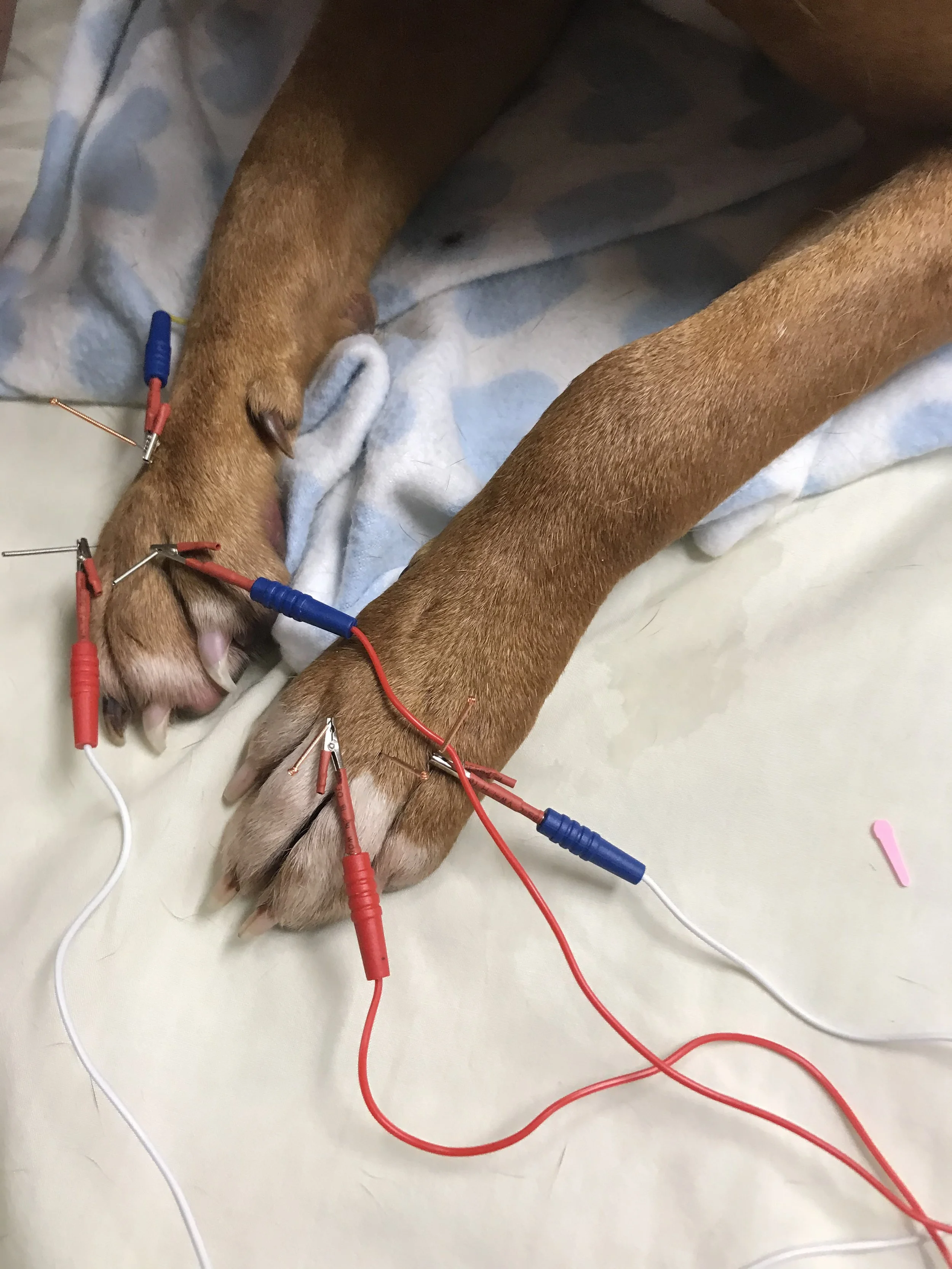
Acupuncture
WHAT IS ACUPUNCTURE?
Acupuncture is one of the four branches of Traditional Chinese Medicine (TCM) that has been practiced for nearly 4,000 years. It is defined as the stimulation of a specific point on the body with a specific method, resulting in a therapeutic homeostatic effect.
The ancient Chinese discovered that the health of the body depends on the state of Qi, which is the life force or vital energy. There are two opposite forms of Qi: Yin and Yang. Physiologically, Qi flows throughout the body at all times, maintaining a balance of Yin & Yang. When the flow of Qi is interrupted by any pathological factor, the balance of Yin and Yang is lost, and disease may occur. Pain is interpreted as the blockage of Qi flow. Acupuncture stimulation resolves this blockage, freeing the flow of Qi and enabling the body to heal itself.
Qi flows throughout the body along energetic channels called meridians. Each meridian is also associated with a specific internal organ, which reflects the physiological and pathological conditions of that organ. The meridians connect the exterior of the body with the interior of the body.
Acupuncture points are located along these meridians, and when stimulated can relieve pain and help restore normal body function. These points have specific locations and effects and have been well documented over the years. Modern research shows that acupuncture points are located in areas where there is a large density of free nerve endings, mast cells, small arterioles, and lymphatic vessels. The stimulation of these points induces the release of beta-endorphins, serotonin, and other neurotransmitters that produce multiple physiologic effects that activate the body's homeostatic regulatory mechanisms.
Acupuncture is not considered to be a "cure-all" but it can be effective used by itself, or more commonly, as an adjunct to conventional Western medicine. Acupuncture is commonly used when conventional medications are not working, when conventional medications are resulting in undesirable effects, or where surgical treatment is not an option. It can be used as the only modality of treatment or can be combined with other forms of treatment, including herbal remedies, homeopathic remedies, nutrition, and spinal manipulation (animal chiropractic).
If you have further questions, please send us a message at info@onpointvetservices.com .
The information above was provided by IVAS, International Veterinary Acupuncture Society.
WHAT IS ACUPUNCTURE?
Acupuncture is one of the four branches of Traditional Chinese Medicine (TCM) that has been practiced for nearly 4,000 years. It is defined as the stimulation of a specific point on the body with a specific method, resulting in a therapeutic homeostatic effect.
The ancient Chinese discovered that the health of the body depends on the state of Qi, which is the life force or vital energy. There are two opposite forms of Qi: Yin and Yang. Physiologically, Qi flows throughout the body at all times, maintaining a balance of Yin & Yang. When the flow of Qi is interrupted by any pathological factor, the balance of Yin and Yang is lost, and disease may occur. Pain is interpreted as the blockage of Qi flow. Acupuncture stimulation resolves this blockage, freeing the flow of Qi and enabling the body to heal itself.
Qi flows throughout the body along energetic channels called meridians. Each meridian is also associated with a specific internal organ, which reflects the physiological and pathological conditions of that organ. The meridians connect the exterior of the body with the interior of the body.
Acupuncture points are located along these meridians, and when stimulated can relieve pain and help restore normal body function. These points have specific locations and effects and have been well documented over the years. Modern research shows that acupuncture points are located in areas where there is a large density of free nerve endings, mast cells, small arterioles, and lymphatic vessels. The stimulation of these points induces the release of beta-endorphins, serotonin, and other neurotransmitters that produce multiple physiologic effects that activate the body's homeostatic regulatory mechanisms.
Acupuncture is not considered to be a "cure-all" but it can be effective used by itself, or more commonly, as an adjunct to conventional Western medicine. Acupuncture is commonly used when conventional medications are not working, when conventional medications are resulting in undesirable effects, or where surgical treatment is not an option. It can be used as the only modality of treatment or can be combined with other forms of treatment, including herbal remedies, homeopathic remedies, nutrition, and spinal manipulation (animal chiropractic).
If you have further questions, please send us a message at info@onpointvetservices.com .
The information above was provided by IVAS, International Veterinary Acupuncture Society.

